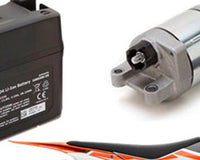Lithium-ion batteries (Li-ion) are very common these days.
In almost all of your portable electronic devices such as laptops, tablets, kindles, mobile phone, drones, wireless headphones, they almost exclusively using lithium-ion batteries.
So now we have Lithium Polymer batteries (LiPo)? So which one is better?
LiPo is marketed as the better battery and the choice to go for over Li-ion however they are very close in performance and some even work better in specific devices.
So let's take a deep dive into lithium-ion batteries as this will help us discover what is the difference between a li-polymer and li-ion battery
When first released they were a real game-changer and opened up a wealth of options to create new devices that were lightweight and had long battery life.
Whilst most Li-ion cells are cylindrical usually they are in a plastic case and inside there are several cells connected to increase voltage, Ah or both. If you can picture a standard household AA battery this is essentially how a Li-ion looks although typically they are a bit bigger in size with the most common size being the 18650 li-ion battery. For example, a laptop, this will normally have 3 or 4 cells connected in series to give 11.1V or 14.8V. Often you can also get extended capacity laptop batteries and they will use twice as many cells. They will connect the second string of cells in parallel which will maintain the same voltage but will double the capacity (Ah or mAh) of the battery.
Lithium-ion batteries must be treated with care as they can explode and cause serious injury or death if not treated with the respect they need too. All Li-ion batteries either have a specific charger and an internal BMS (Battery Management System) to regulate charging and make sure they operate within their acceptable range. Essentially it is a circuit board that virtually eliminates the risk of explosion or fire unless the battery is mistreated such as being cut open, crushed or with severe damage from impact.
Lithium-ion batteries performance reduces when the temperature is too low or too high. They don’t like near-freezing temperatures so if you live in a cooler climate you will notice reduced performance of your mobile phone battery life. This will also affect charging so if you are charging your device in a cold room of the house or in a shed it will not be able to reach its fully charged state. Always charge the batteries in a place where it is warmer.
Now, let's take a deep dive into lithium-polymer batteries as this will help us discover what is the difference between a li-polymer and li-ion battery?
Pictured above is the SSB LH5L-BS High-Performance Lithium-Ion Polymer Dirtbike Battery
There is a lot of confusion around what is the difference between a li-polymer and li-ion battery? “Lithium-polymer batteries” are actually “Lithium-ion polymer” batteries!
So why are the calling the same thing by a different name and what does it mean to me in the real world?
Basically, it means that the batteries labelled as “lithium-polymer” batteries are virtually the same as lithium-ion batteries, but instead of being in a cylindrical cell they are contained in a flexible polymer casing. This often looks like a foil pack and gives more freedom for having the batteries to be thinner but wider so it can fit in more discretely devices such as you iPhone battery. It’s just lithium-ion battery in a different configuration. There is another difference according to batteryuniversity.com:
As far as the user is concerned, lithium polymer is essentially the same as lithium-ion.
Li-polymer is unique in that a micro porous electrolyte replaces the traditional porous separator. Li-polymer offers slightly higher specific energy and can be made thinner than conventional Li-ion, but the manufacturing cost is higher by 10–30 percent.
There is actually a lithium-polymer battery is actually a real Li-po, which uses a polymer as the electrolyte in the battery instead of liquid electrolytes. This lithium-polymer battery is the true lithium-polymer battery but never actually made it to market because of performance issues at what should be normal operating temperatures.
So if you still find yourself asking what is the difference between a li-polymer and li-ion battery we could get ultra-technical but we have got as tech as possible without having to be an electrical engineer to understand it.
Now, you will find you are getting longer battery life out of your laptop for example but that is due to the flatter and more flexible sizes and configurations of the foil packs and allows manufacturers to get more battery cells into the device than if Li-ion was used.
So now that we have established what is the difference between a li-polymer and li-ion battery you can see that you can fit more flat and flexible lithium-ion polymer cells into the same amount of space that you would get with a Li-ion battery so you get more mAh to in the same space. The basic battery technology is the same, however.
So, if you have two choices for purchasing a battery for your portable device and one advertises a lithium-ion battery and the other advertises a lithium-polymer, they are essentially the same thing, but in a different package. You will also find that often marketers don't know the difference anyway and use either based on their misunderstanding of the tech as they haven't read this article!
So now we finally know What is the difference between a li-polymer and li-ion battery!










